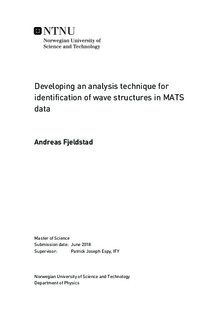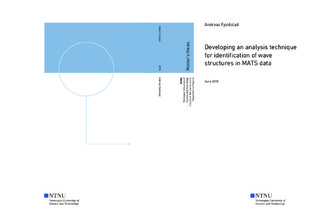| dc.description.abstract | This thesis presents a method for analyzing data gathered during the MATS
mission. The MATS mission is a Swedish satellite mission which aims to
improve our understanding of gravity waves in the mesosphere and their
influence on the atmosphere. The MATS satellite will be launched in 2019,
and observations will mainly be done by imaging the limb of the atmosphere.
The development of a technique for analyzing such data resulted in a
model which returns wave characteristics of waves identified within data sets
similar to what is expected from the MATS mission. The model was tested
with both synthetic data and more realistic data from a forward model made
to simulate MATS data. The synthetic data was made to simulate gravity
waves in the mesosphere, and was mainly used during the development of
the model.
The model developed treats and filters the data, and returns wave characteristics
of waves present within the data set. The results presented in this
thesis show that the model often mistakes noise and side lobes for waves,
leading to an output not consistent with the expected results when synthetic
data is used. However, the model was able to find the wave characteristics of
data accepted as wave peaks, leading to the conclusion that the problems and
inaccuracies in the output are from the identification of waves, and not from
the calculations of the wave characteristics. Thus, further work with filtering
and identifying waves in data fields resembling MATS data is needed. | |

